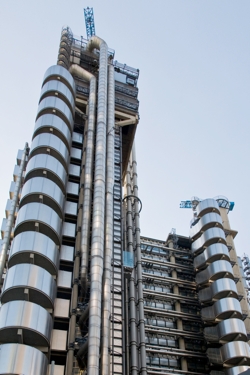Eight Lloyd’s of London syndicates are teaming up to provide their specialist underwriting skills and $400 million of natural catastrophe insurance and reinsurance capacity to help developing economies build resilience to disaster, climate or weather risks.
 The eight Lloyd’s syndicates aim to develop new solutions to combat underinsurance, help to fill the protection gap and increase the resilience of the developing world to the threat of natural catastrophes and severe weather events.
The eight Lloyd’s syndicates aim to develop new solutions to combat underinsurance, help to fill the protection gap and increase the resilience of the developing world to the threat of natural catastrophes and severe weather events.
The $400 million of capacity has been committed by syndicates managed by Amlin, Beazley, Hiscox, Mitsui Sumitomo Insurance Group, Nephila Capital, RenaissanceRe Syndicate Management, Tokio Marine Kiln and XL Catlin.
The involvement of the world’s largest catastrophe insurance and reinsurance linked investment manager Nephila ensures that an element of capital markets support will be brought into this initiative.
Lloyd’s stresses that membership of this facility of pool is open to the entire market and other managing agencies will be welcome to participate.
Tom Bolt, Director of Performance Management at Lloyd’s, commented; “This collective initiative means the Lloyd’s market can help provide the insurance solutions needed to build resilience to natural hazards and promote risk awareness around the world. We are keen to work closely with organisations across the globe to help protect economic growth in developing countries.”
The group of eight syndicates has issued an open invitation to international organisations including, but not limited to, the World Bank and the British government’s Department for International Development, as it looks to partner on initiatives as a risk capital provider.
The group also aims to strengthen its existing ties with several ongoing global initiatives, such as the Insurance Development Forum created by the International Insurance Society, as well as to engage with governments, municipalities, and non-governmental organisations, in addition to Lloyd’s typical client base.
The timing of the announcement is important, coming the week before the Paris COP21 climate talks begin, where loss and damages from climate related disaster and weather events are set to be high on the agenda.
In order for organisations like UNISDR to achieve their goals of reducing the loss and damage impact from climate change, weather disasters and natural catastrophes, efficient sources of risk capital are required. This Lloyd’s syndicate led initiative looks set to bring significant expertise and insurance or reinsurance capacity to support work on this issue.
Absolutely key to the deployment of this capacity will be targeting initiatives that promise sustainable insurance market development, supported by this kind of insurance and reinsurance capacity. Risk sharing initiatives and diversification globally will also be key, as these initiatives struggle to be as sustainable if overly concentrated.
With underinsurance a key threat to ongoing economic development and growth the world is aware of the need to begin to tackle this. An insurance and reinsurance market initiative like this can support the many ongoing projects which aim to narrow the protection gap through the provision of needed risk capital and expertise.
Lloyd’s highlights that emerging economies in Latin America, Africa, and Asia currently contribute 40% to global GDP, but make up just 16% of global insurance premiums. That leaves a gap which after disaster can hurt growth and development and damage local markets.
This risk capacity can also be put to good use helping sovereign governments, municipalities and cities to become more resilient, by accessing the insurance and reinsurance market for catastrophe and weather cover, helping to protect them from the negative impacts of climate and disaster risks.
The establishment of a $400 million natural catastrophe insurance and reinsurance facility for emerging economies is a clear sign of the importance Lloyd’s and its members place on combating underinsurance, but of course also highlights the fact that the market is also seeking new opportunities and to open new avenues for growth.
The involvement of Nephila is encouraging, as it is another sign that the Lloyd’s market is increasingly accepting of third-party ILS capacity. It will be interesting to see how the planned UK transformer legislation could be leveraged in years to come, to perhaps give large institutional investors such as pension funds direct access to support this type of facility as well.
Such a move could bring the needed capital to insurance and reinsurance markets in developing regions of the world in an efficient manner, just what is required if this protection gap is to be narrowed.
 Read our series of articles focused on the insurance protection gap – under-insurance in emerging and developing economies, the gap between economic and insurance losses, and transferring risk from public sector to private – the opportunity that is on every reinsurance CEO’s lips and which presents the largest opportunity to put excess risk transfer capital to use, requiring both traditional and capital markets support.
Read our series of articles focused on the insurance protection gap – under-insurance in emerging and developing economies, the gap between economic and insurance losses, and transferring risk from public sector to private – the opportunity that is on every reinsurance CEO’s lips and which presents the largest opportunity to put excess risk transfer capital to use, requiring both traditional and capital markets support.
 View all of our Artemis Live video interviews and subscribe to our podcast.
View all of our Artemis Live video interviews and subscribe to our podcast.
All of our Artemis Live insurance-linked securities (ILS), catastrophe bonds and reinsurance video content and video interviews can be accessed online.
Our Artemis Live podcast can be subscribed to using the typical podcast services providers, including Apple, Google, Spotify and more.































